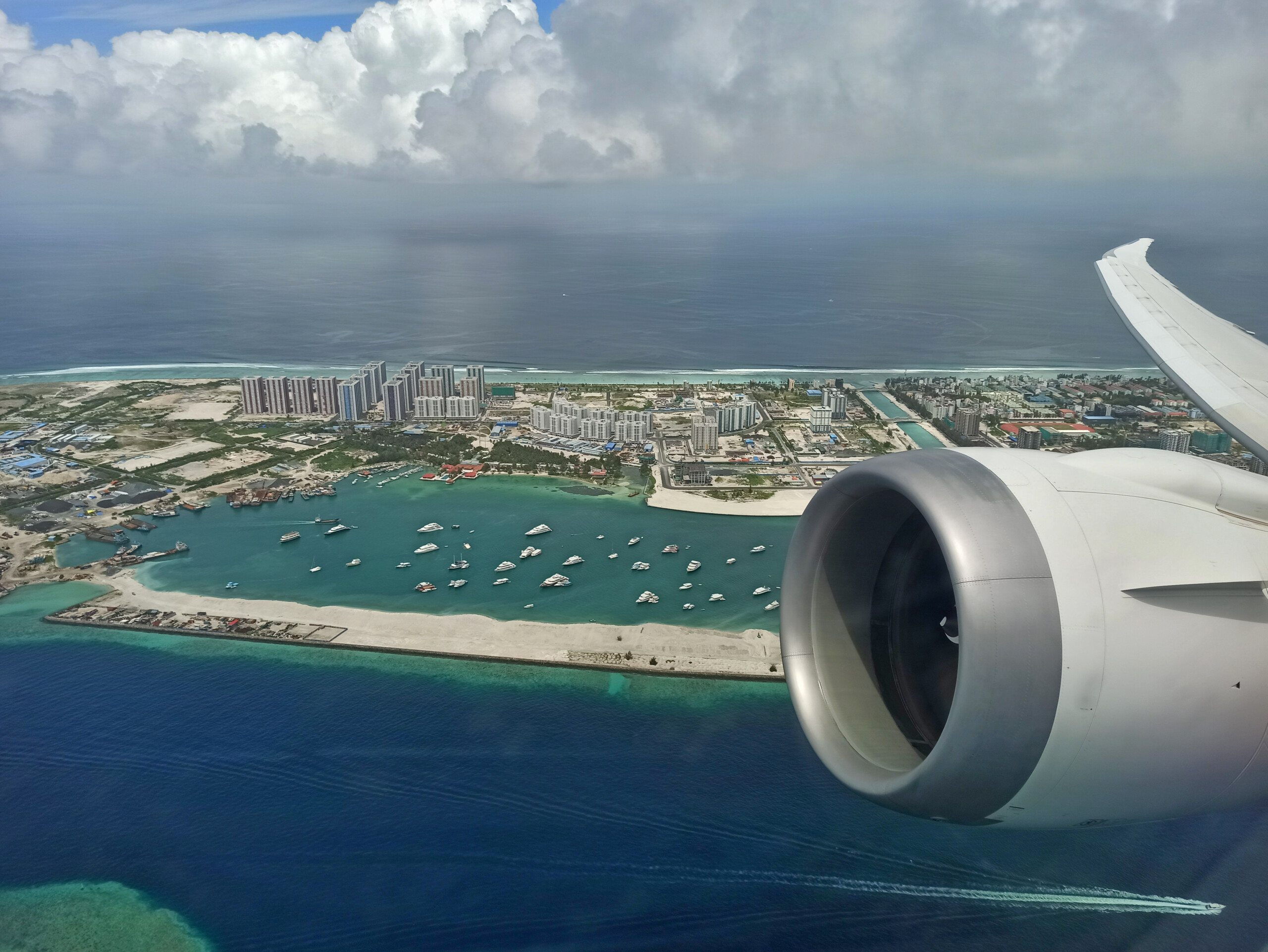
Beyond snorkeling between schools of tropical fish and rubbish floating by a jetty near Hulhumale’, and getting nauseous from diesel fumes from the ferries, I wasn’t sure what else to do.
Oh, right. Let’s explore Maldivian food.
Right off the bat, you should know that fish, specifically skipjack tuna, is THE staple of the Maldives. The canned (tinned for British English viewers) variety is more and more common, but traditionally the tuna was cured – in this case, boiled, smoked and sun-choked – into a product called ari. Coconuts are also par for the course, which raises Maldivian food to level awesome.
Secondly, I was glad though not surprised that English was often present. I had no idea how to say anything in Dhivehi, although basic Chinese or Russian might also have helped.

That said, here’s when I had a generally good sense of what I ordered:
The first meal I ate in the Maldives was appropriately a tuna-centric one. It tasted canned, and the chapati – known locally as roshi – was lukewarm at best. What a disappointment.
Maybe I’m being too hard on the food. I drank the water, so that’s probably where the disappointment set in.
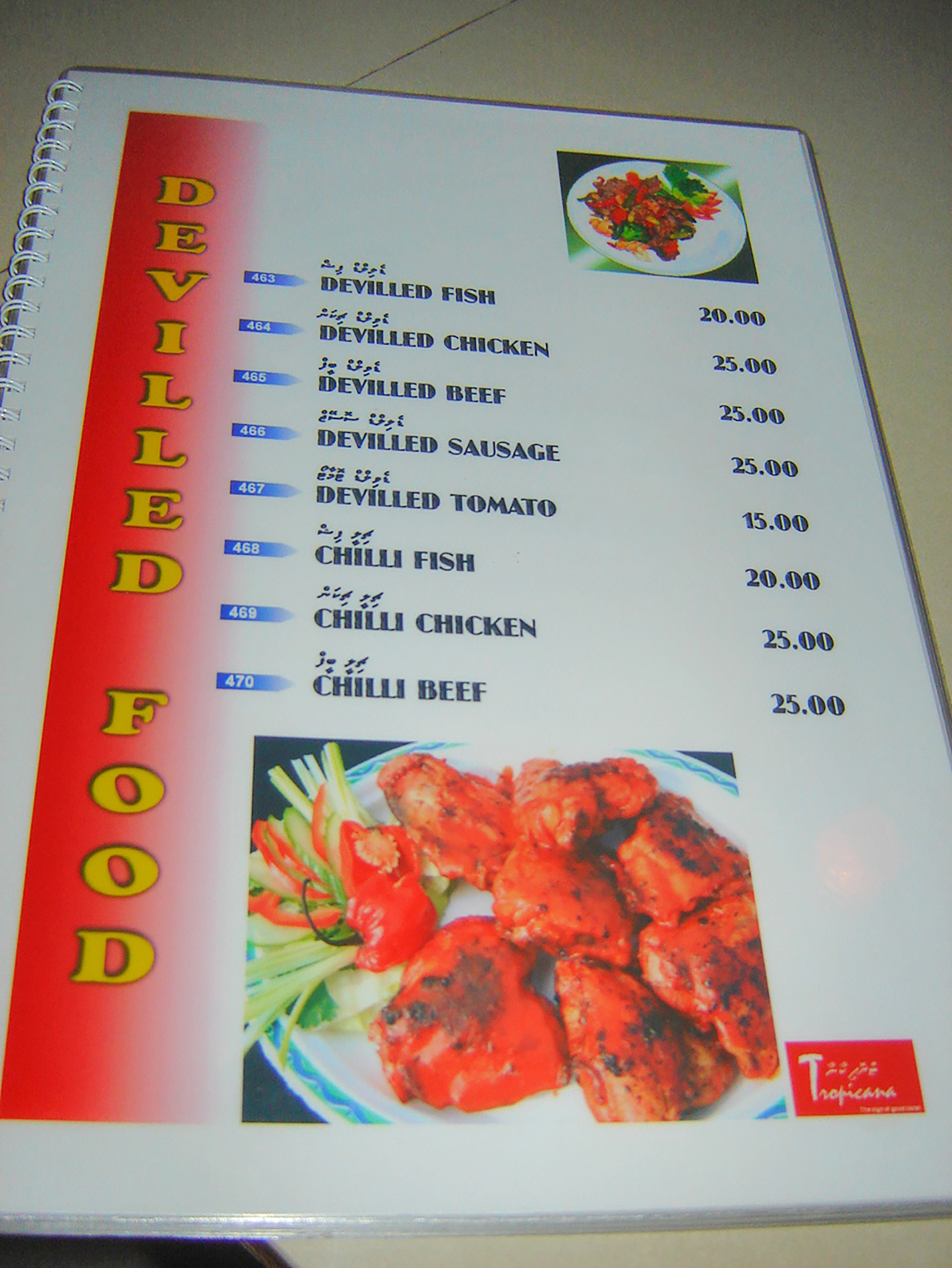
The server knew me well.
Wandering around downtown Male’ on one of my empty stomachs, I sought refuge in a bustling short eats (called hedhika in Dhiveli) hole-in-the-wall.
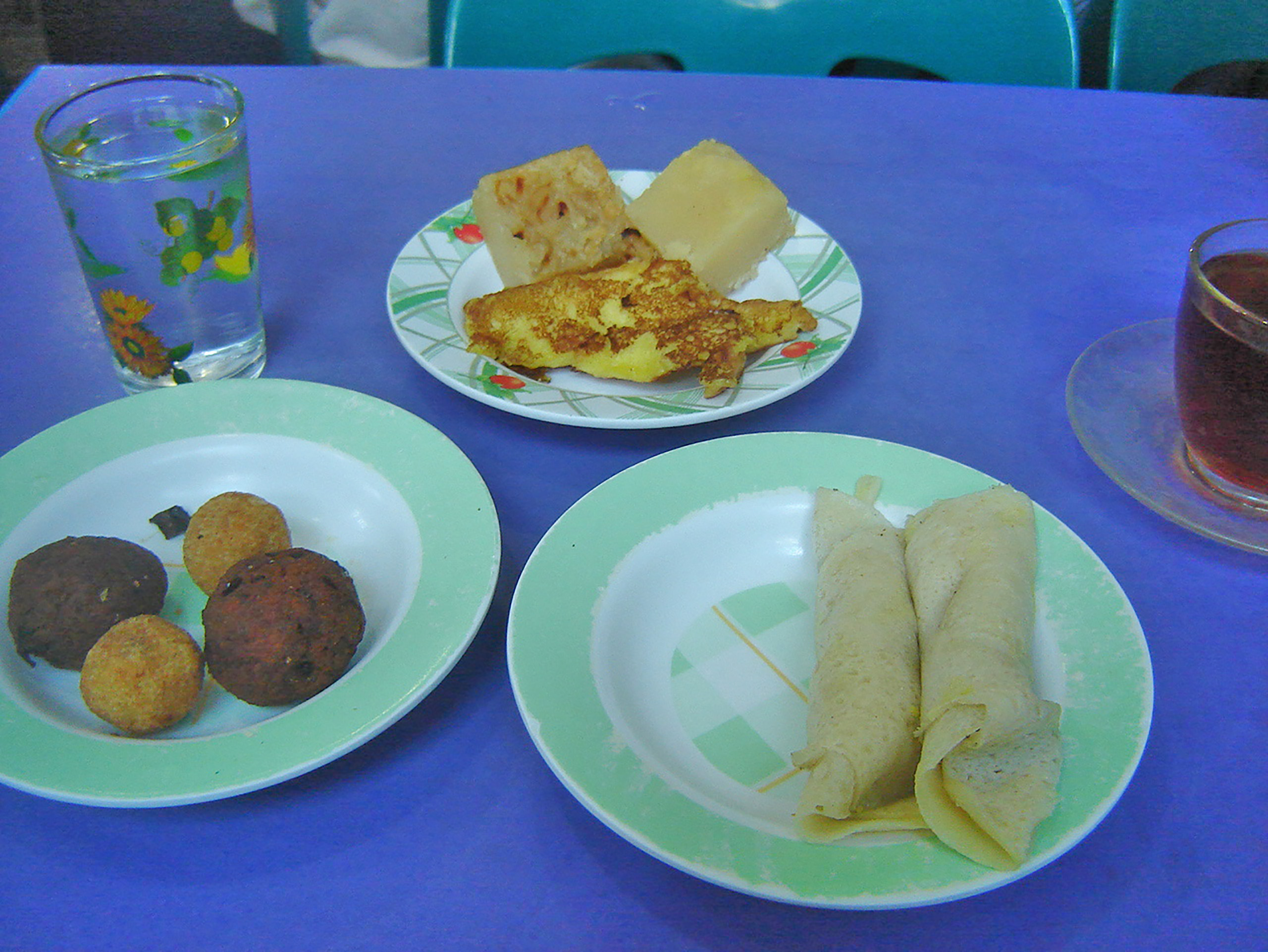
What’s on the menu? Fried things, round fried things, fried round things, and tuna. With fried coconut. And heavily sweetened tea. And grilled tuna.
The first plates come by. The lighter things in the lower-left are called gulha, made with tuna, coconut and chilies, and the darker ones are kavaabu, fried with tuna, potatoes and lime. To the right, we have riha folhi, curried tuna rolls.
In the back, unfortunately I don’t recall the names of those hedhika. The yellow item that looks like a swimming turtle is NOT an egg, and the glutinous cubes behind it didn’t have much taste.
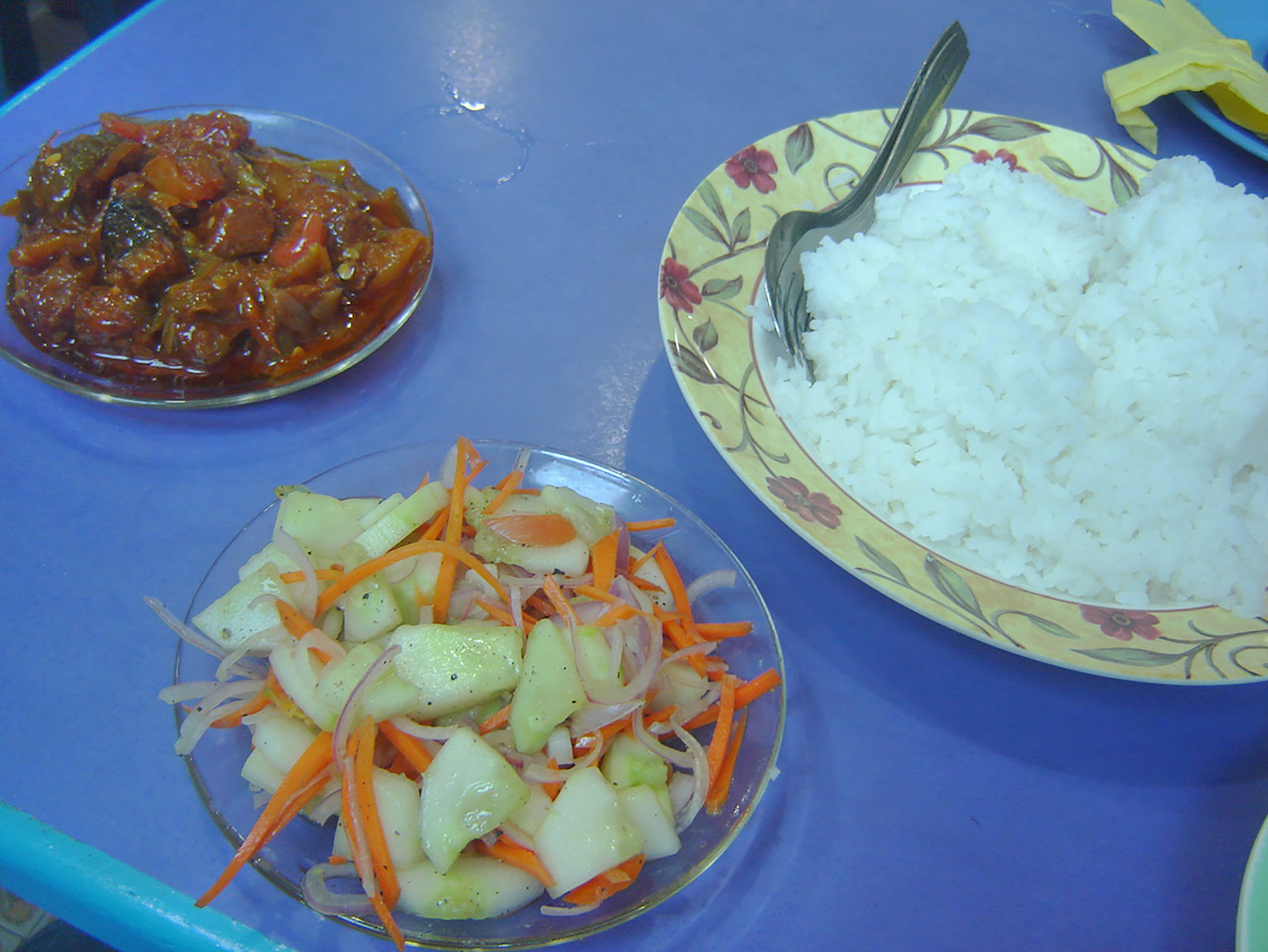
Add the fish curry to the list of foods that made me suffer dearly. I couldn’t speak for a few minutes because it set my mouth on fire for some time. That the rice was boiling hot didn’t help things, nor did the spicy vegetables (including red onions, another Maldivian favorite). Which is to say, I’d order that curry again, if only I knew the name!
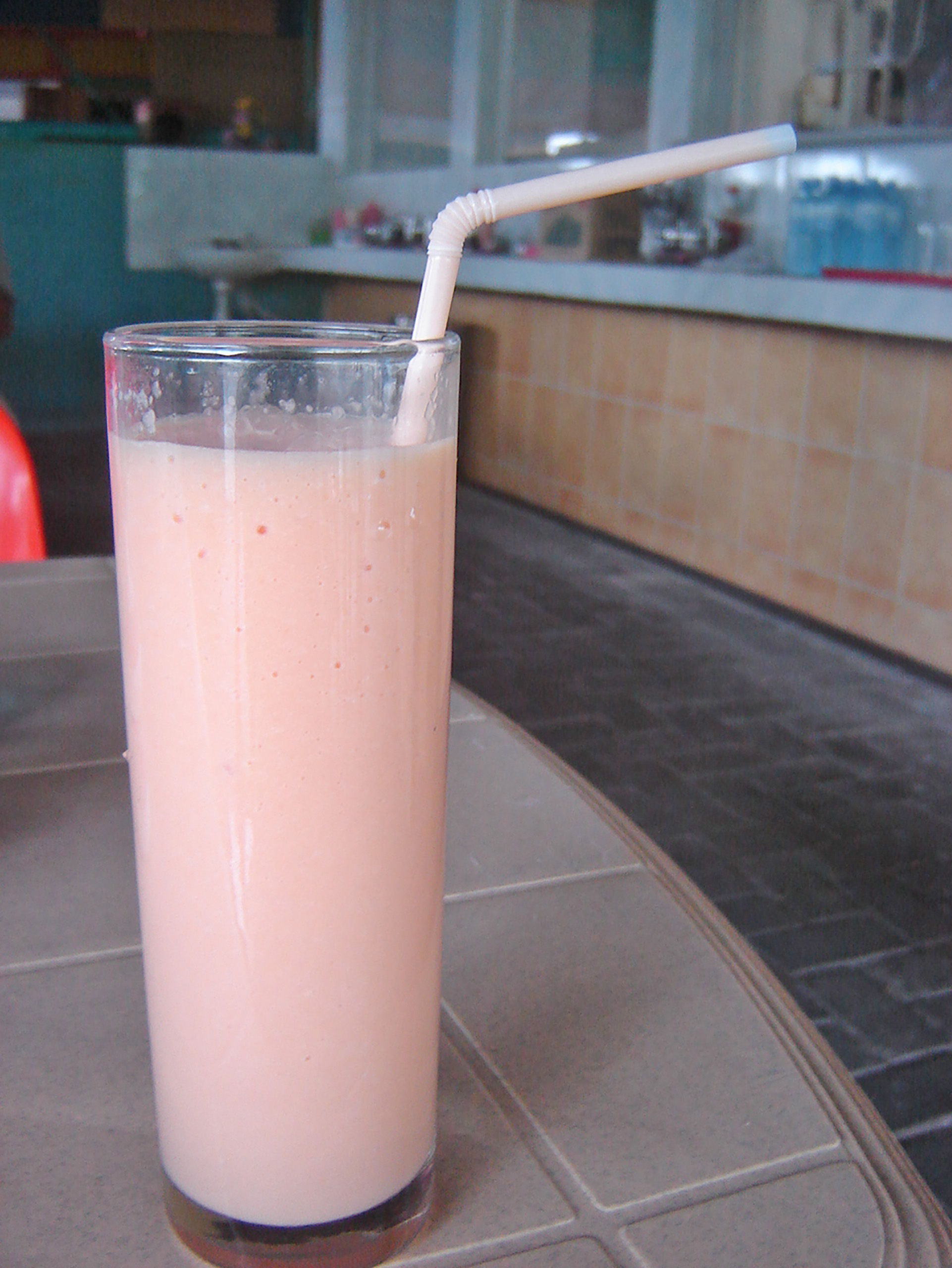
Papaya shake. Although I often think papayas have a Bubblicious aftertaste, they are refreshing in shake-form. No sugar, no ice, all fresh…just hope that the glass was properly cleaned.
Now it’s time to go into the “doldrums of food” category:
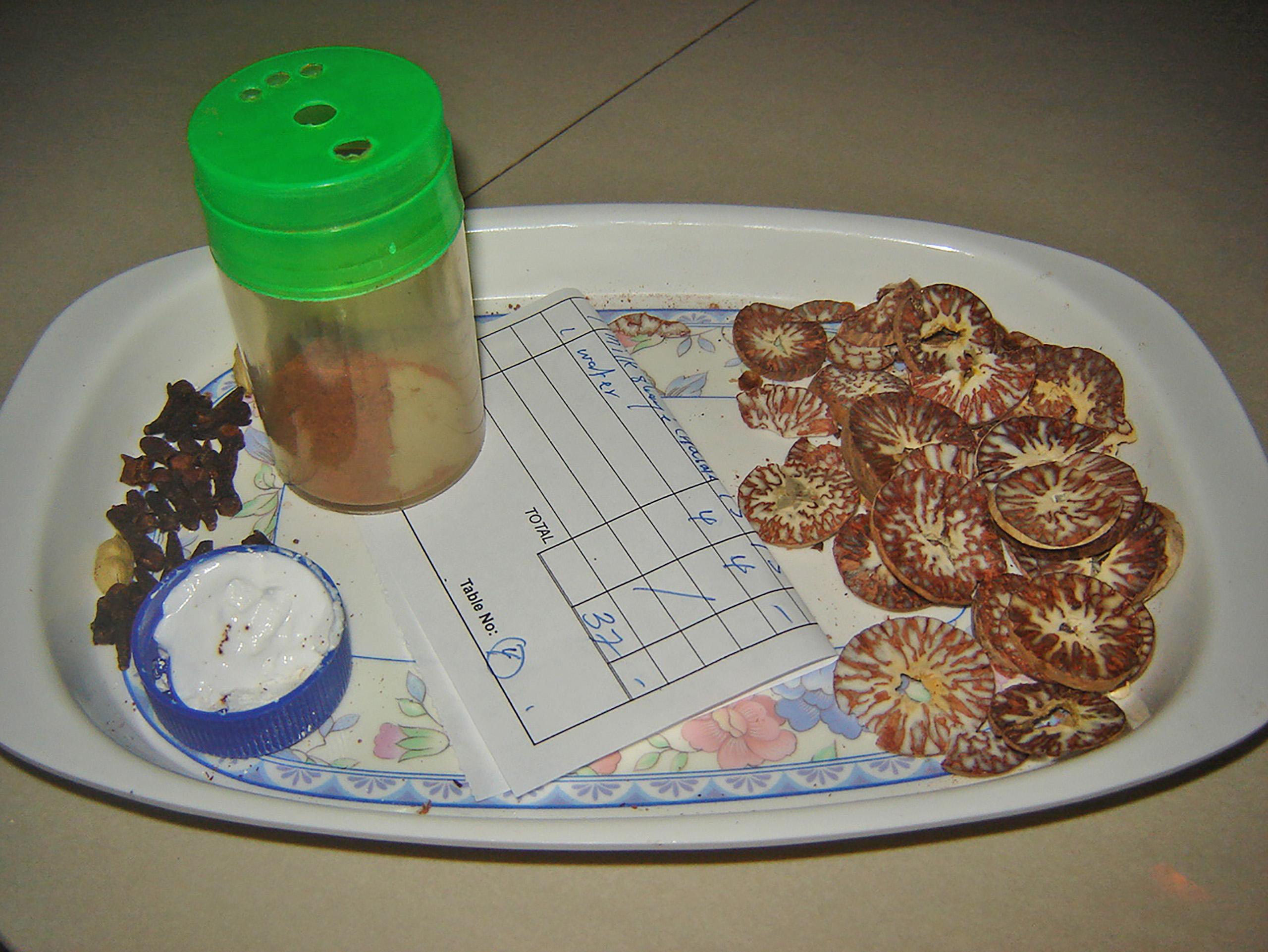
You’re supposed to spit it out?
This potent combination of a stimulant – the areca nut, cinnamon, cloves, and calcium hydroxide (to help with absorption) usually follows a Maldivian meal. That is, I thought it was a dessert, so down the hatch a handful went.
Another afternoon wasted.
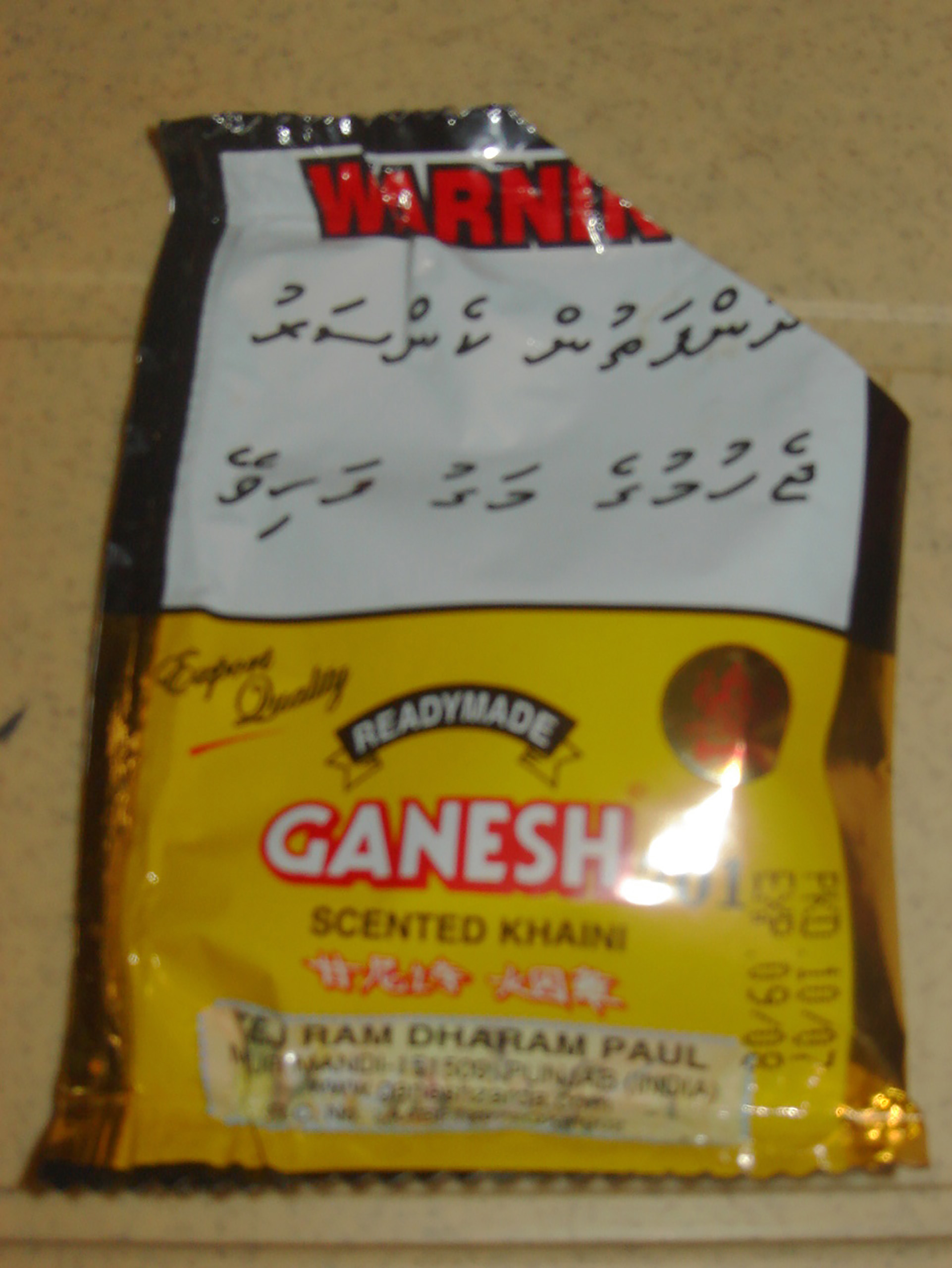
The warning notice should have been a red flag, but I still dared to try a thimble’s worth of khaini, or ready-to-roll tobacco. Who needs Amsterdam when the Maldives are ready to serve you; they’ve even just introduced a points system for frequent travelers, so watch out Sabena!.
Have you tried Maldivian cuisine?

All of this looks so good!
Have you been to the Maldives? Where’s your next foodie destination?
The menu prices you show seem awfully high for USD so I checked the exchange rate, which is around 15 to the dollar. The thing is, that seems ludicrously cheap instead of ludicrously expensive. Any insight?
Hi Christian, in fact it’s in Maldiviaan rufiyaa. It was cheap! But then again, I wasn’t eating anywhere near resorts, where prices are vastly different (and where there’s no outside competition).